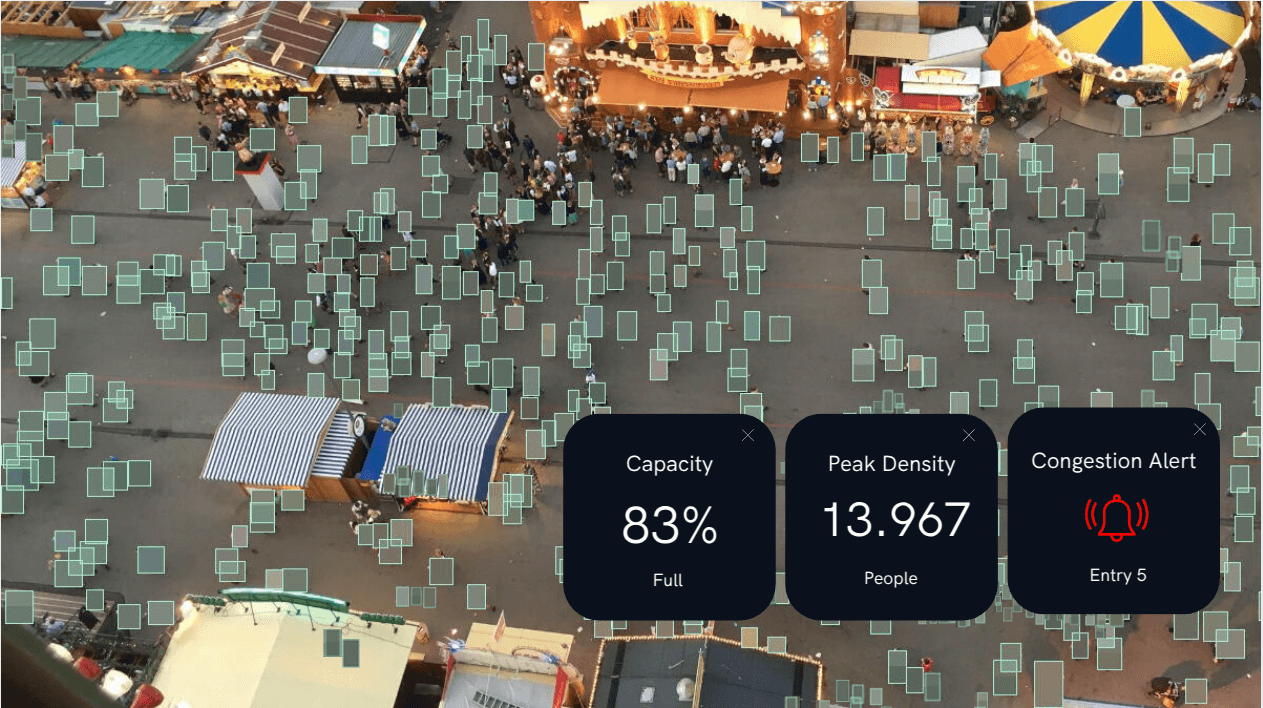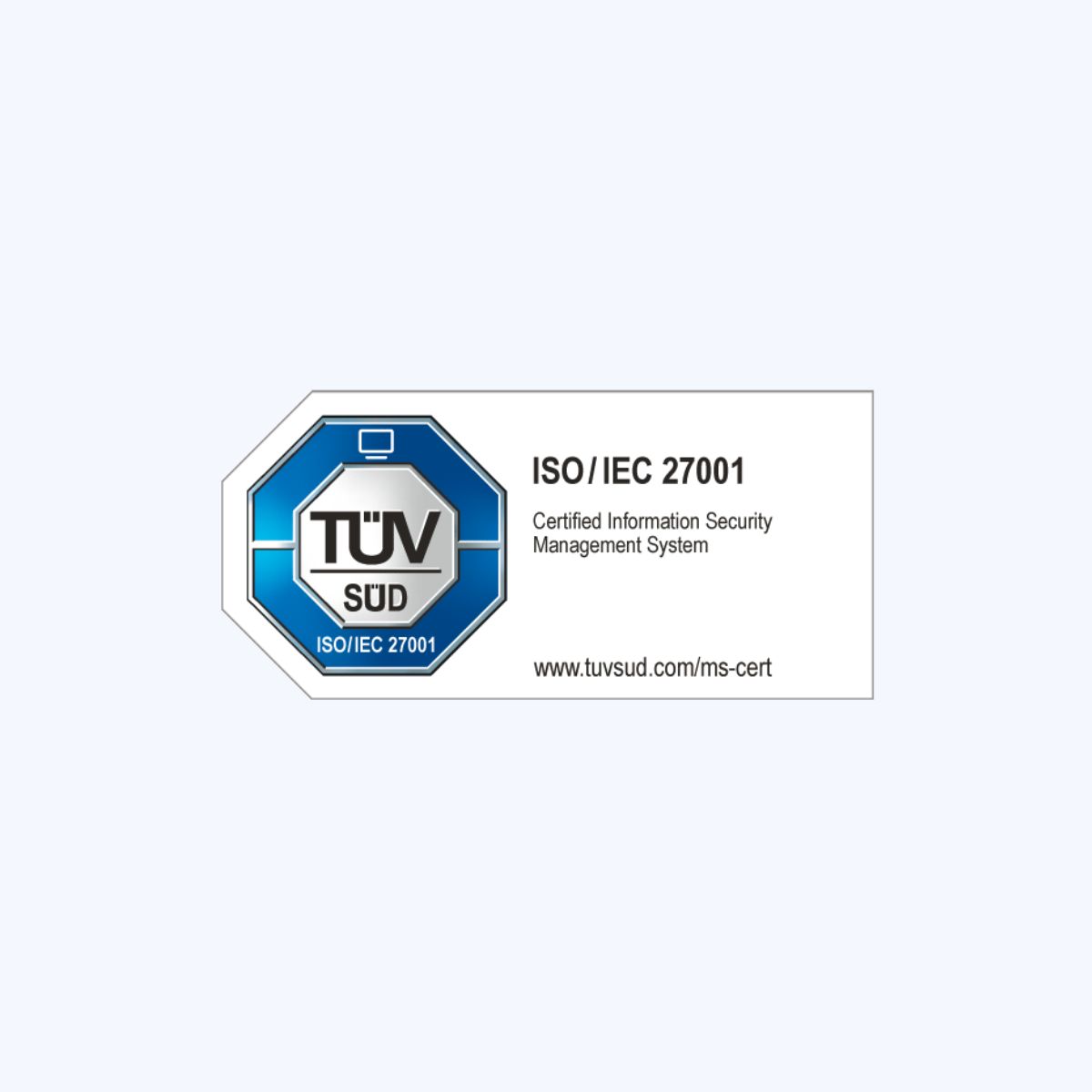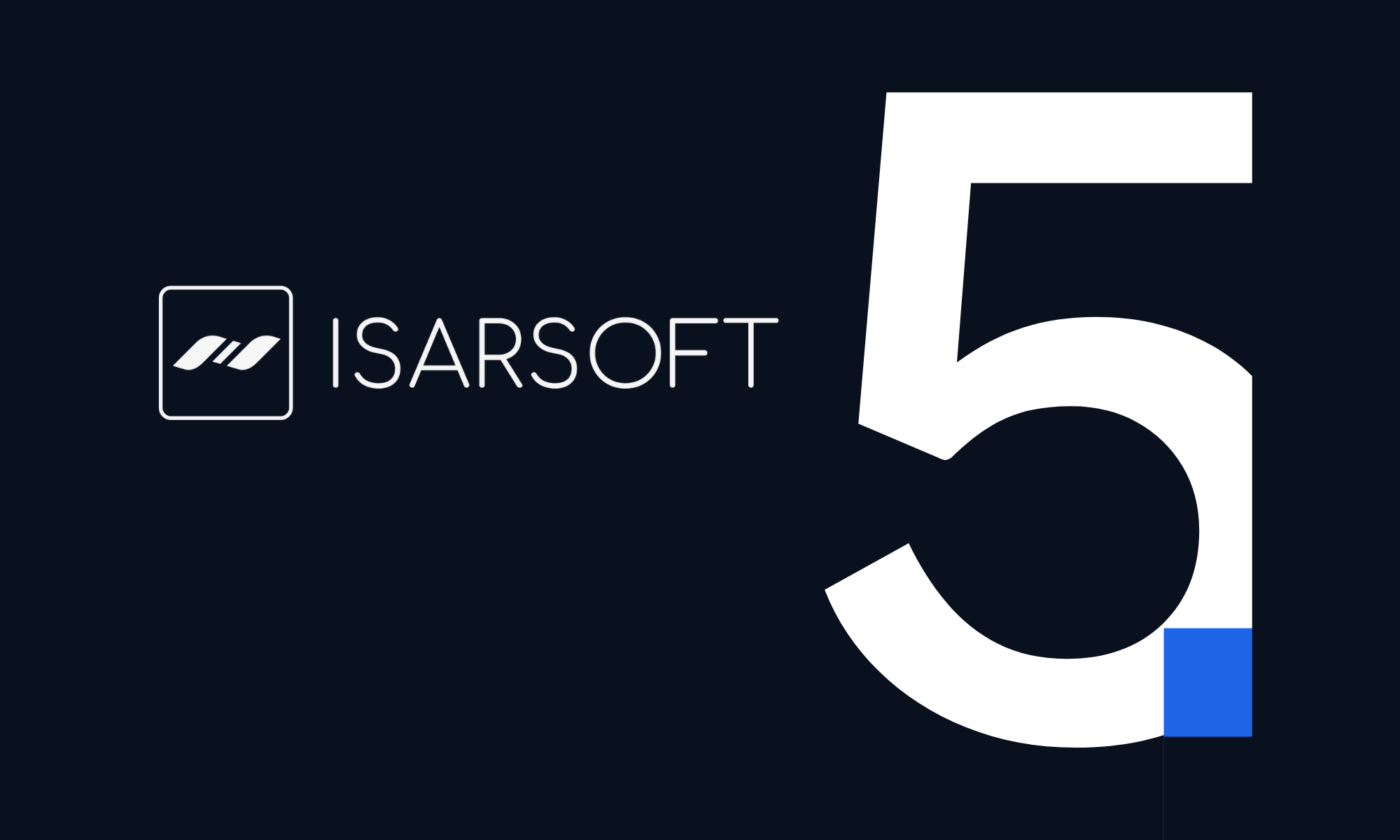How Video Analytics is Changing People Counting in 2025: A Practical Guide
Discover how a people counting solution powered by AI and video analytics helps monitor foot traffic in real time and optimize operations across industries.
Published
July 22, 2025

What is Video-Based People Counting?
Video people counting is a method of measuring the number of individuals passing through or occupying a physical space by analyzing video footage—typically from existing surveillance or IP cameras—using artificial intelligence (AI) and computer vision.
Unlike methods dependent on physical sensors, video systems use algorithms to identify, track, and count people as they move through a camera's field of view. This approach forms the basis of automated people counting, enabling non-intrusive, accurate data collection across multiple environments.

How It Works
At the core of people counting technology is a blend of AI models—especially object detection and tracking—working together to replicate human perception. Here's a high-level breakdown:
- Detection: The system uses deep learning to identify people in the camera feed, filtering out irrelevant objects.
- Tracking: Each individual is assigned a unique ID, followed across frames—a crucial process in real-time human detection & counting.
- Virtual Zones & Lines: Users can configure digital zones or lines, such as entryways, aisles, or exits.
- Counting Events: Each movement across defined areas is logged, enabling actionable metrics.
This method also supports human counting using camera systems in dynamic environments, reducing manual intervention.
How It Differs from Other Methods
Unlike basic sensor tools, people counting analytics supports contextual behavior analysis—from density people counting to flow monitoring in complex infrastructures.
When to Use Video-Based Counting
Video analytics is especially valuable when:
- You need accurate people counting in high-density zones
- Multiple entrances and exits complicate traditional methods
- You operate in public or private facilities where compliance and safety are priorities
- You require integrations with BI or people counting dashboard tools
Solutions can serve diverse needs, including people counting in facilities where resource optimization is essential.
Benefits of Video Analytics for People Counting
Video analytics doesn’t just count people — it turns camera feeds into a source of actionable intelligence. Compared to traditional sensor-based methods, video-based systems offer a broad set of advantages for operational efficiency, safety, and strategic decision-making.
1. High Accuracy in Real-World Conditions
Thanks to advanced object detection and multi-object tracking algorithms, footfall counter software offer high accuracy even in:
- High-traffic environments
- Crowded scenes with occlusions
- Complex layouts with multiple entry/exit points
With proper camera placement and calibration, accuracy rates can exceed 95%.

2. No Need for Additional Hardware
Most footfall counter solutions — including those from vendors like Isarsoft — are designed to work with existing surveillance infrastructure:
- Compatible with major IP camera brands
- Saves cost on installation and maintenance
- No need for physical sensors, smart flooring, or wearable tags
This makes it highly scalable for organizations with many locations.
3. Real-Time Insights and Alerts
Video analytics can process footage in real time, enabling immediate action:
- Alert staff when occupancy exceeds limits
- Monitor queue lengths and deploy personnel dynamically
- Trigger signage, ventilation, or access systems automatically
This is critical in environments like airports, train stations, and public venues.
4. GDPR-Ready and Privacy-Preserving
Unlike facial recognition, people counting uses anonymized bounding boxes and metadata:
- No biometric or personally identifiable information is stored
- Systems can blur video, store only analytics, or run fully on edge devices
- Compliant with GDPR, CCPA, and similar global regulations
This balance between insight and privacy is key for public deployments.
5. Flexible Deployment Options
You can deploy video analytics:
- On edge devices (like smart cameras or embedded GPUs)
- On-premise servers
- In the cloud for multi-site aggregation and dashboards
People-counting-in-real-time gives organizations full control over performance, bandwidth, and data governance.
6. Rich Contextual Data Beyond Just Counting
Video people counting software provides more than a number. It can generate:
- Heatmaps and flow paths
- Dwell time per zone
- Directional movement
- Entry/exit frequency over time
- Historical trends and visualizations
This enables footfall analysis, operational planning, and even marketing optimization (e.g., identifying high-engagement zones in a store).
7. Integrates with Other Systems
Modern solutions like cctv people counting support integrations with:
- BI tools (Power BI, Tableau)
- Access control and HVAC systems
- Digital signage and queue management platforms
This allows organizations to automate and optimize space usage, energy consumption, and customer experience.
Where Is Video-Based People Counting Used?
Video analytics for people flow counting is being adopted across industries — from retail and transportation to smart cities and event management. What these environments have in common is the need to understand, manage, and optimize the movement of people in real time.
Here are the most common and impactful application areas:
1. Retail Stores and Shopping Centers
Retailers rely on accurate footfall data to:
- Measure store performance and conversion rates
- Identify peak hours and optimize staff schedules
- Analyze customer dwell time and popular zones
- Run A/B tests for store layout or marketing campaigns
Example:
A supermarket tracks customer flow at entrances, aisles, and checkouts — helping managers reduce bottlenecks and increase staffing efficiency during peak times.
2. Airports and Transportation Hubs
With thousands of daily passengers, airports and stations use gdpr-compliant people counting solutions to:
- Monitor queue lengths at security, immigration, and check-in
- Manage crowd flow in terminals and boarding gates
- Enable real-time alerts when occupancy limits are exceeded
- Optimize infrastructure usage like baggage belts and lounges
Example:
At a busy airport, human counting data triggers alerts when queues exceed 5 minutes, prompting staff to open additional counters or direct passengers to other zones.
3. Events, Venues, and Museums
Event organizers and venue managers benefit by:
- Monitoring attendance and capacity in real time
- Improving emergency preparedness and evacuation plans
- Analyzing crowd flow to redesign entrances/exits or signage
- Enhancing visitor experience with responsive staffing
Example:
A stadium uses automatic people counting to adjust concessions and security based on real-time visitor density across zones.
4. Smart Cities and Public Spaces
City planners deploy video-based solutions for counting people to:
- Measure pedestrian flows in high-traffic zones
- Evaluate the effectiveness of infrastructure projects
- Design safer crossings, bike lanes, and sidewalks
- Monitor crowding in transit stations or parks
Example:
A smart city uses people counting systems to evaluate changes in foot traffic after pedestrianizing a street — informing future planning decisions.
How to Choose a Video People Counting Solution
Not all video analytics systems are created equal. Choosing the right AI people counting solution depends on your environment, goals, and integration needs. This section walks you through what to evaluate — whether you're piloting a project in a single store or rolling out across an airport, transit hub, or city.
Prioritize Accuracy Where It Matters Most
Accuracy is the foundation of any people counting camera software. Inconsistent counts can lead to misinformed decisions, whether you’re staffing a retail floor or managing airport queues. A high-quality solution should offer robust tracking in real-world conditions — including crowded environments, poor lighting, and fast movement.
Ask for real-world accuracy metrics, not just lab-tested figures, and consider running a pilot in one of your busiest or most complex environments.
Start with Your Camera Infrastructure
A major benefit of video analytics is the ability to use existing IP camera systems — but compatibility still matters. Before committing, ensure the software supports your current camera brands, resolutions, and layouts.
The best systems adapt to a variety of camera positions, whether ceiling-mounted, wall-mounted, or embedded into public infrastructure. In many cases, strategic repositioning can significantly improve performance without requiring new hardware.
Choose the Right Deployment Architecture
Video analytics platforms are typically available in three deployment models: edge, on-premise, and cloud.
- Edge computing is ideal when you need ultra-low latency and minimal bandwidth usage. It allows processing directly on smart cameras or nearby hardware.
- On-premise solutions give full control over data security and are suitable for sensitive environments like airports or government buildings.
- Cloud platforms offer scalability and centralized access across multiple sites — perfect for organizations managing multiple locations.
Select the architecture that aligns with your IT environment, data privacy strategy, and operational goals.
Seek Insights, Not Just Numbers
Basic footfall counting is just the start. A powerful platform should deliver rich analytics: foot traffic patterns, entry/exit directionality, occupancy rates by time of day, dwell times, and heatmaps that visualize crowd flow.
Interactive dashboards and customizable alerts — such as notifications when a room exceeds safe capacity — transform raw counts into operational intelligence. Bonus points if the system offers API access so you can integrate it into your existing dashboards or business intelligence tools.
Ensure Privacy & Compliance
With growing attention on data privacy, it's critical to choose a solution that is GDPR-compliant and privacy-respecting by design. The best people counting software platforms use anonymous object tracking rather than facial recognition or biometric identification. Look for features such as video anonymization, local processing options, and encrypted data transfer.
A vendor should be transparent about their compliance practices and provide documentation to support regulatory reviews.
Think Beyond: Integrate and Grow
Your people counting AI system shouldn’t be a silo. Leading solutions integrate with a wide range of third-party tools — from digital signage and HVAC systems to queue management software and security platforms. This enables automation and orchestration based on real-time occupancy data.
Additionally, think about long-term scalability. Can the system easily expand to more entrances, zones, or locations as your needs grow?
Support & Sustainability Check
Finally, consider the human side of the technology: onboarding, customer support, and system maintenance. Does the vendor offer help with setup, camera calibration, and training? Are software updates included? What happens when something goes wrong?
A responsive support team can be the difference between a seamless rollout and a technical headache.
Video People Counting: What to Consider
While video analytics is a powerful and scalable solution for automated people counting, its accuracy and effectiveness depend on thoughtful deployment. From hardware setup to privacy compliance, several factors can influence performance.
Here are a few considerations to keep in mind:
- Camera Placement Matters: The accuracy of counts can be significantly affected by angle, height, and lighting. Top-down views generally work best.
- Environmental Conditions Can Vary: Sudden changes in light (e.g. sunlight, shadows) or crowd density can lead to occlusions or miscounts.
- Privacy and Compliance Are Critical: Especially in public or regulated spaces, ensuring GDPR-compliant data handling is essential. This includes anonymization and secure data storage.
- System Maintenance Is Ongoing: Changes to layouts, lighting, or camera setups may require recalibration or validation over time.
For a more detailed breakdown of these challenges — and how to solve them — read our full article: The Top Challenges in Video-Based People Counting.

Why Video Analytics Leads People Counting
As organizations across industries seek to optimize physical spaces, improve operations, and enhance user experiences, the ability to understand how people move — in real time and at scale — is becoming indispensable.
Video analytics has emerged as the most versatile and accurate method of counting the people, offering:
- Real-time insights with high accuracy
- Scalable deployment on existing infrastructure
- Context-rich data that drives smarter decisions
- Compliance with modern privacy regulations
Whether you’re managing a retail chain, an airport, a transport network, or a smart building, real time human detection and counting equips you with the intelligence to adapt dynamically — not reactively — to your environment.
If you're ready to move beyond basic footfall counters and explore what's truly possible with intelligent video analytics...
Talk to our team about how to tailor a solution to your space.



